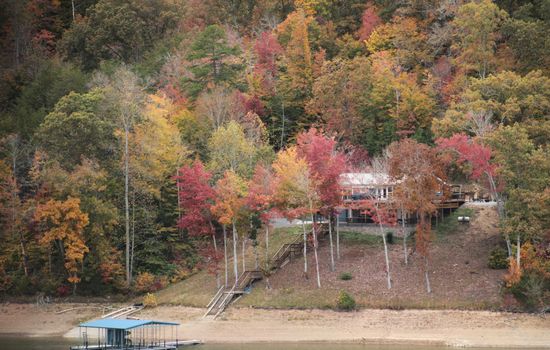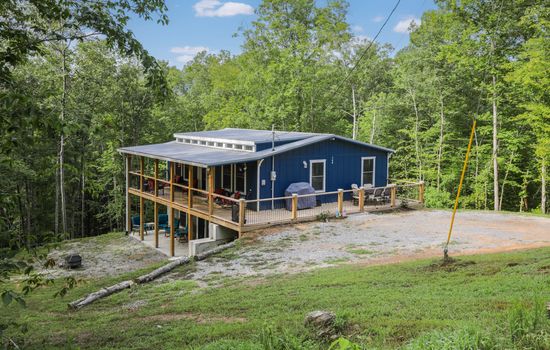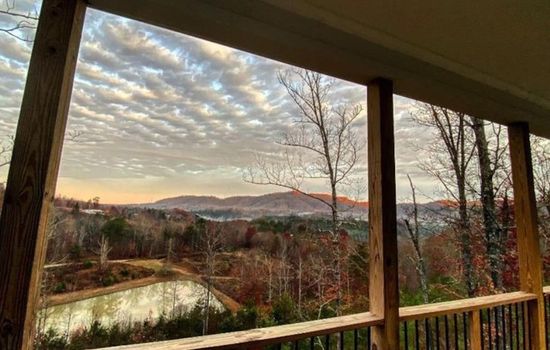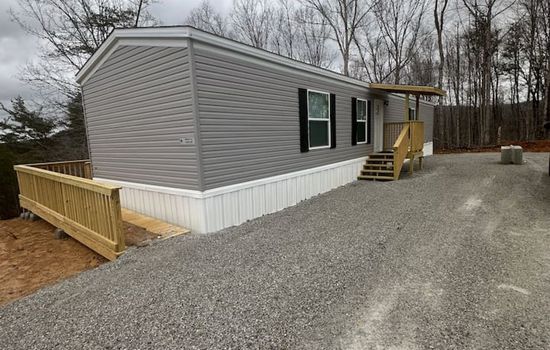The visitor center at Cumberland Gap National Historical Park is open daily from 9:00 AM to 4:00 PM, except for Thanksgiving Day, Christmas Day, and New Year’s Day.
There is no entrance fee at Cumberland Gap National Historical Park. Admission is free year-round.
From Knoxville, take I-75 to Hwy 63 at Jacksboro, then east to Hwy 25E, and north 2 miles. Immerse yourself in Appalachian history and natural beauty.
Parking is available at various lots, including the Thomas Walker parking area and the visitor center lot. Spaces accommodate cars, RVs, and motorcycles. No overnight parking at day-use lots; camping RVs up to 40 feet can use Wilderness Road Campground. No parking fees for day-use lots.
Accessibility & permits
Emergency
- Cell service availability:Partial
Information not accurate?
Help us improve by making a suggestion.
Cumberland Gap National Historical Park, straddling the borders of Kentucky, Tennessee, and Virginia, is a verdant tapestry of history, wilderness, and natural beauty. This 24,000-acre park, part of the Cumberland Mountains, was the pivotal gateway to the West for Native Americans, longhunters, and pioneers. Here, the Appalachian Mountains yield to a landscape of hemlock groves, wildflower fields, and meadows of rhododendron and fiddle ferns.
Hike the 85 miles of trails, including segments of the historic Wilderness Road, and explore the park’s 14 known cave features, some stretching over 16 miles. The dramatic 500-foot cliffs of White Rocks stand sentinel in the eastern portion, while the Pinnacle Overlook offers a panoramic view, especially during the fall raptor migration.
The park is a haven for wildlife enthusiasts, with sightings of barred owls, wild turkeys, ruffed grouse, and bald eagles. The mild climate, with hot summers and mild winters, makes it an ideal destination year-round. Visit the Hensley Settlement for a glimpse into 19th-century life or take a cave tour to uncover the park’s subterranean wonders.
In the evenings, camp under the stars or enjoy the tranquility of the park’s vast wilderness. For cultural enrichment, the park’s Visitor Center features a museum, dramatic films, and a bookstore. Nearby, artisan towns offer a blend of local crafts and historical charm. Cumberland Gap National Historical Park is a destination where history meets nature, inviting travelers to immerse themselves in its unique and captivating landscape.
- Area (mi²)
- 32
- Annual visitors
- 800 000
- Established year
- 1955
Top 3 Facts about Cumberland Gap National Historical Park
This historical site is home to 178 insect species, 27 fish species, 29 amphibian species, 15 reptile species, and 33 mammal species, highlighting its rich biodiversity.
This verdant enclave is home to over 40 mammal species, including white-tailed deer, gray squirrels, and the elusive black bear. The skies are filled with 89 bird species, while hawks and vultures soar during the spectacular autumn migrations. Beneath the surface, 27 fish species inhabit the waters, and caves shelter rare troglobionts and six bat species, including the endangered Indiana bat. With 178 documented insect species and a diverse array of reptiles and amphibians, this ecosystem is a kaleidoscope of wildlife, awaiting discovery at dawn and dusk when its inhabitants are most active.
Tucked within the Appalachian Mountains, this verdant landscape boasts cliffs as high as 500 feet, such as the imposing White Rocks, and spans 24,000 acres with elevations ranging from 1,100 to 3,500 feet. The mild climate features hot, humid summers and mild winters, with an average annual temperature of 54°F. Explore over 85 miles of trails through groves of hemlock and fields of wildflowers, or venture into one of the 24 known caves, some stretching over 16 miles in length.
Family programs
- Junior Ranger
- Ranger-led Tours
- Living History & Cultural Demons
- Workshops & Hands-on Activities.
Travel Tips
Plan Ahead
Plan for a few days to explore 85 miles of trails. Arrive via Highway 25E, park at Thomas Walker area. Visit the visitor center first. Hike to Pinnacle Peak for panoramic views. Rest often on rocky terrain. Pack meals, as options are limited. Visit May-October for Guided Gap Cave tours.
Pack Appropriately
Pack layers for variable weather, sturdy footwear, and a backpack with essentials like water, snacks, map, and first aid kit. Bring camping gear if staying overnight. Don’t forget sun protection and a headlamp for late hikes. Check the season for specific needs like warm hats or bug spray.
Respect Wildlife
Maintain a safe distance from wildlife – 100 yards from bears and wolves, 25 yards from others. Never feed animals and keep trails and habitats undisturbed to preserve natural behaviors and safety. Dispose of trash properly to protect the environment. Respect the wildlife’s space and let them thrive undisturbed.
Stay Informed
Stay on marked trails, avoid ledges and fast water, and check weather and fire alerts. For emergencies, call 911 or park authorities at 606-248-2817. Be cautious of seasonal temperature and weather changes.
Seasons
Spring brings mild temperatures (60s-70s°F) and blooming wildflowers. Witness the Powell River Kayak & Canoe Regatta in April, or the Sip & Stroll market on the first Wednesday of each month, featuring yoga, live music, and local crafts. Ideal for outdoor enthusiasts.
Summer brings warm temperatures (70s-80s°F) and humid days, ideal for hiking 70 miles of trails. Attend the Cumberland Gap Folkfest in summer, featuring live music and local crafts. Perfect for outdoor enthusiasts seeking historic and natural immersion.[/s]
Experience autumn’s vibrant hues from September to November, with mild temperatures (50s-70s°F) and occasional overcast days. Attend the Harvest Moon Art and Wine Festival in late September, and hike the Ridge Trail for breathtaking foliage views. Ideal for photography and serene outdoor escapades.
Winter brings mild temperatures, ranging from 30s to 40s Fahrenheit, with occasional snow January through March. Crisp air and fewer crowds make it an ideal time for serene hikes and historic exploration, though unpredictable weather at higher elevations requires careful planning.
Information not accurate?
Help us improve by making a suggestion.
Where to stay
Frequently Asked Questions
Ready to dive into what Cumberland Gap National Historical Park has to offer? Let’s tackle some of the burning questions you might have as you plan your visit!
-
The closest city to Cumberland Gap National Historical Park is Middlesboro, Kentucky, which is near the tri-state border of Kentucky, Virginia, and Tennessee. Another nearby city is Corbin, Kentucky, about 50 miles north. Knoxville, Tennessee, is also a significant nearby city, approximately 85 miles away.
-
For kids, the best hiking trail is likely the short 1/4-mile loop trails, which offer easy walks with little elevation gain and are suitable for all ages. These trails provide a leisurely stroll through the eastern deciduous forests and can be a great introduction to hiking. Ranger-led hikes are also available, offering a guided and educational experience.
-
Dogs must be on a leash no longer than 6 feet at all times. This rule applies to all trails and campgrounds within the park. Owners should also be cautious due to the presence of bears.
-
Admission is free, and parking is included. You can park at various areas such as the Thomas Walker parking area for hiking trails or at the Wilderness Road Campground for campers, trailers, and motorhomes.
-
Cumberland Gap was a crucial passage for hundreds of thousands of settlers moving westward during the late 18th and early 19th centuries, particularly along the Wilderness Road. It was first documented by European explorer Thomas Walker in 1750 and later used by Daniel Boone. The gap played a strategic role in the American Civil War due to its access to essential rail lines, changing hands several times between Union and Confederate forces.





